Heidelberg Castle Signed Antique Reverse Glass Painting Germany 20 X 16 in
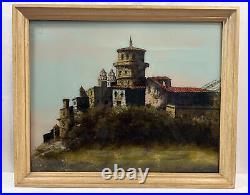
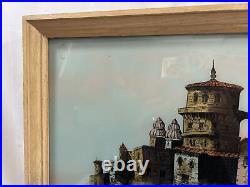
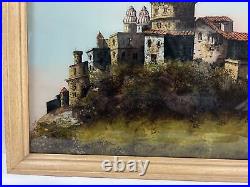
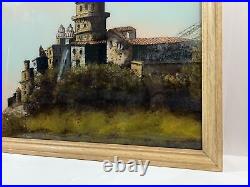
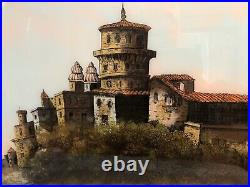
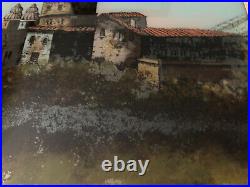
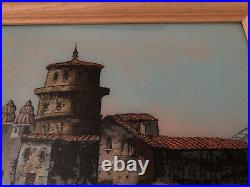
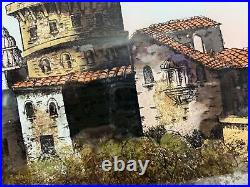
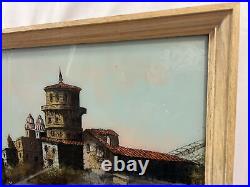


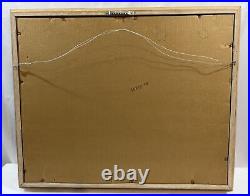

This rare reverse painting is signed Heidelberg Castle. The castle depicts purposeful spots of damage in crystallized paint in parts, representing lightning strikes and damage. Excerpts from different sites define some of the castle's history below. Measurements of the glass is 20 x 16 inches approximate (22 x18 with frame). It's in good vintage condition with spots of missing paint, especially noted in the bushes portion below the castle; vintage smudging. No chips or cracks in the glass. History of Heidelberg Castle starts in early 1200s when documents started mentioning presence of'the' castle in the location of the Heidelberg city, in Germany. Records from that time mentioned not only one, but two castles that were created there, but in 1303, lightning struck the upper castle and destroyed it. After Rupert III became King of Germany, castle Heidelberg started being renovated and expanded, but that expansion varied from king to king that came after him. Country of Germany was mostly divided between several royal lines, and Heidelberg castle became not only royal house but also important military stronghold that was involved in many skirmishes. During this war, Frederick V left castle undefended, which enabled General Tilly (commanded the Catholic League's forces) to capture the castle defenses in 1622.
After that siege, castle was involved in several more skirmishes before the end of the war. Castle Heidelberg was also a part of the Nine Years' War between France and Grand Alliance, in which German was a part of Holy Roman Empire. During that war, French took hold of the deserted Heidelberg castle in 1688 and retreated from it in 1689 while setting it on fire and destroying its fortifications and defensive structures. In the decades after this war, castle remained in ruin and only the most basic renovations were performed.
Salvation of the castle came not from nobles, royals and German politicians, but from artists, who started painting and promoting the castle across entire Europe, giving castle vocal support from several European lords, most notably French count Charles de Graimberg. In second part of 19th century, German poets and historians started arguing for expensive complete restoration, which finally happened between 1897 and 1900. During all that time, castle became more and more famous, and tourists Europe and North America started visiting it in ever increasing numbers.
Today, Heidelberg Castle is visited by Europeans, Japanese and North Americans, who have heard about this castle from the memoirs of their famous writer Mark Twain. Although no confirmation has ever been found, it is said that the castle foundations were settled into two complexes- the upper castle and the lower castle. However, disaster struck in 1537 when the upper complex became the victim of a harsh lightning strike and burnt down. The ruins we see today are of the lower structure which was unharmed. It was when Elector Ludwig (Louis) V came along that Heidelberg Castle truly blossomed. Over time, Electors such as Ludwig, Otto-Heinrich, and two more Electors, both named Friedrich, commissioned many things to make the castle grander than ever before. Unfortunately, the goodness within didn't stick around for long and in 1618, Friedrich was forced to flee during the 30 Years' War. The initial onslaught didn't affect the castle but unfortunately, the stunning Hortus Palatinus gardens did not survive and instead fell into ruin. It wasn't until the late 1600's that the castle fell victim to the French forces. Without so much as a second thought, they went ahead and released their wrath upon the castle and destroying the notable Powder Tower. The disheartened townspeople of Heidelberg worked hard to restore the castle to its former glory, though their efforts proved futile.Despite numerous rebuilding efforts, the Electors essentially called it quits and moved their court to Mannheim and essentially condemned Heidelberg Castle to obscurity. Though the despair didn't end there when Heidelberg Castle was again hit by lightning in 1764 which ignited another fire that swept across and left Heidelberg Castle burning. It was from then on, that Heidelberg Castles became an eternal ruin.
